Royal begonia
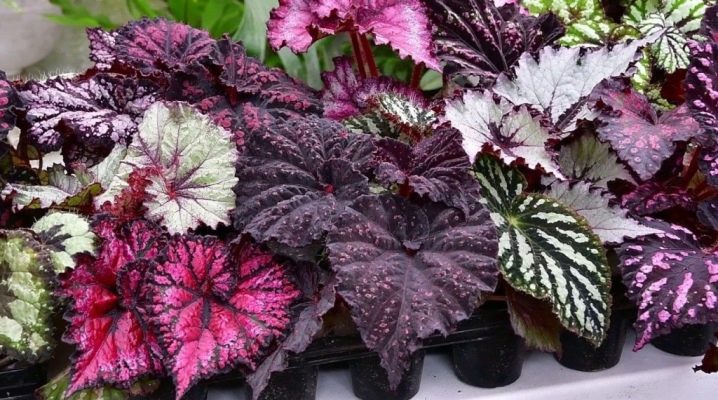
Royal begonia is one of the most beautiful and original flowers in the world. It is also often called "Rex" begonia. It has large leaves of a luxurious color, which are simply impossible not to pay attention to, in addition, this plant perfectly purifies the air due to its special properties. In this article, we will take a closer look at the description of this plant, with the popular varieties of royal begonia and their care. We will also take a closer look at the reproduction of this flower at home.
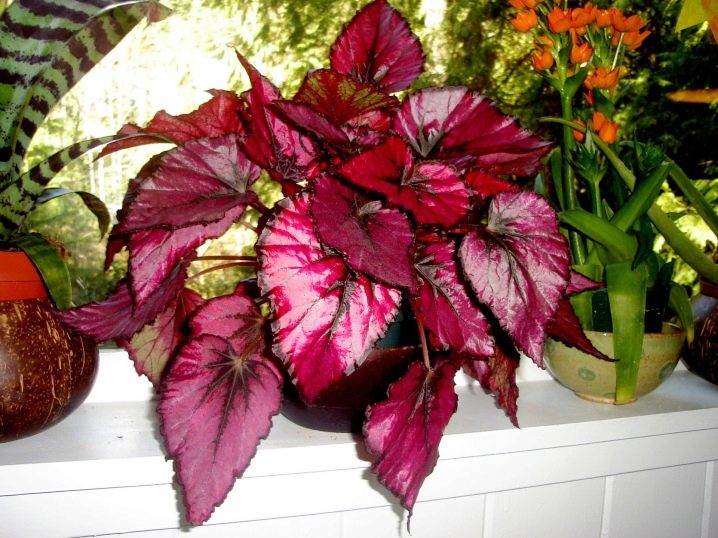
Description
Royal begonia belongs to the family of begonias. Almost all of its varieties have very original asymmetrical leaves with an unusual color. In nature, begonias are most often found in tropical forests and in the mountains. However, they survive well at home. Indoor royal begonia has a fairly large root system, which often rises above the soil. The leaves of this plant are wide, have a heart-shaped base and pointed edges. Depending on the variety, royal begonia has a different color of leaves - from copper-gray to cherry-brown with a special shine.
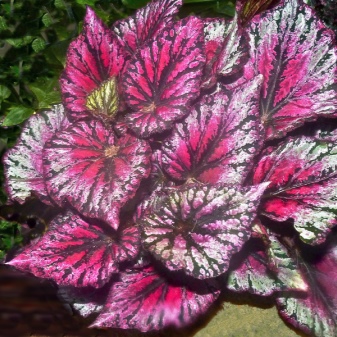
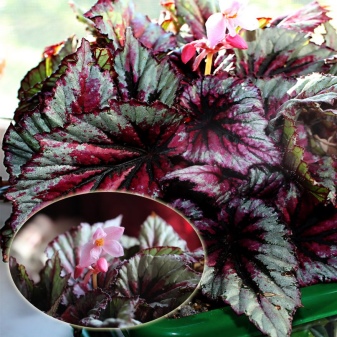
The flowering of the royal begonia is rather modest and even scarce in comparison with the leaves. It is the leaves that are the main advantage of begonia.
Varieties
Today there are several varieties and types of Rex begonias. Almost all of them can be purchased at specialized stores. But first, let's consider the most popular types that are in demand among domestic gardeners.

Red-leaved begonia Fista
The variety is one of the most readily available begonias. Its distinctive features are large, rounded leaves of a red-green hue. As a rule, this species grows in a small, neat and compact bush, rather unpretentious to care for.
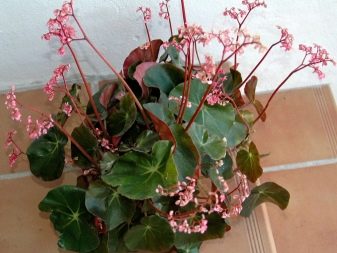
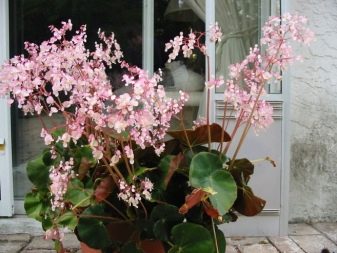
Cuff
One of the most picky subspecies is the Cuffed begonia. This plant has a creeping stem and light green pointed leaves with reddish veins on the back.
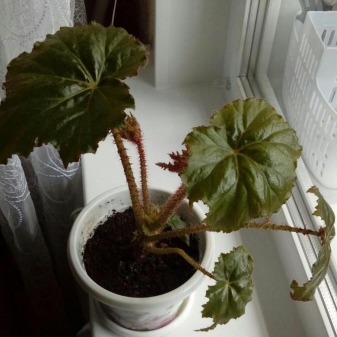
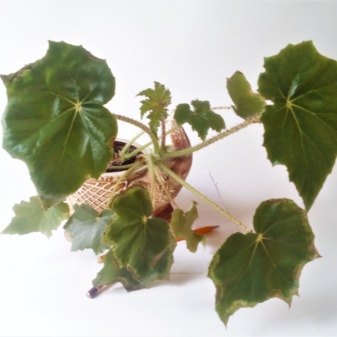
Hogweed
This kind of begonia has a very original stem of a pale pink color with a light edging, as well as large leaves that resemble the leaves of the hogweed, which mainly grows in Brazil.
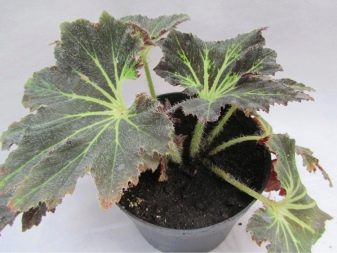

Thanks to the many years and fruitful work of breeders, several luxurious varieties of royal begonias have been created today.
Mini merry christmas
This black and burgundy hybrid begonia really looks like a cozy Christmas with its leaves. She belongs to variegated. Its leaves are velvety, have rather large veins, towards the edges, the color from rich burgundy with white dots goes to black.
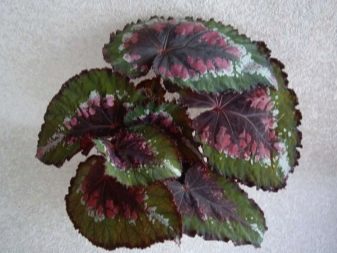

Escargot
Escargot begonia is also considered to be no less unique. Thanks to this plant, real tropics can be arranged right in your home greenhouse. The color of the leaves of this begonia is silvery green, and the pattern on them resembles a spiral or curl. Unlike the previous variety, this begonia has not velvety, but matte leaves covered with miniature villi. The average size of varietal large-leaved begonias, as a rule, is no more than 30 centimeters, which is very convenient for indoor cultivation.

Dollar down
We also recommend paying attention to the luxurious royal begonia with pointed cherry-red Dollar Down leaves. The edging of the leaves of this variety is dark, which creates a very original effect when passing from one shade to another.
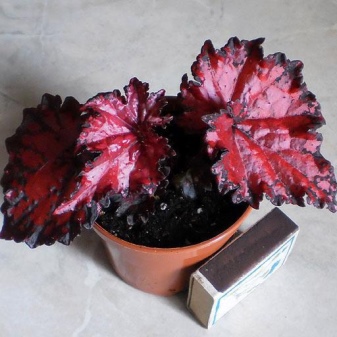
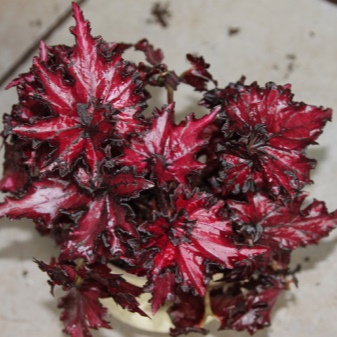
Griffon
The royal begonia Griffon can please with large saturated white-green leaves. It is this hybrid variety that grows the most, within 40 cm. Despite the fact that this is a selective species, it is extremely easy to care for it at home.
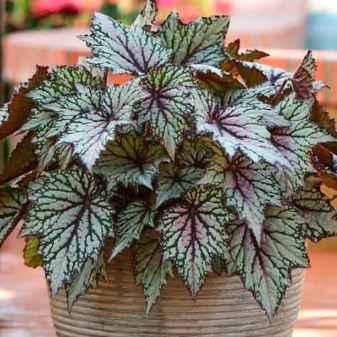
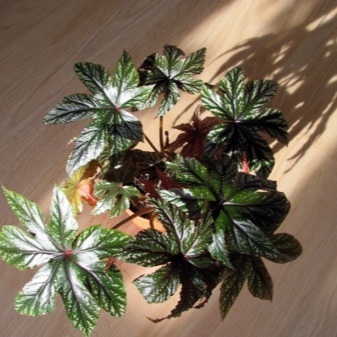
Dark mambo
Begonia with the original name Dark Mambo has a deep dark color. It got its name for its luxurious and sophisticated appearance, which immediately attracts special attention.
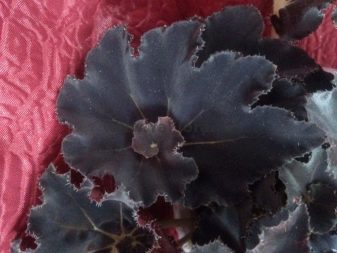
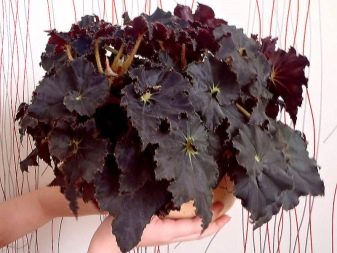
Indian summer
Pink-black large leaves can be found on the Indian Summer begonias. This flower actually looks like a king.
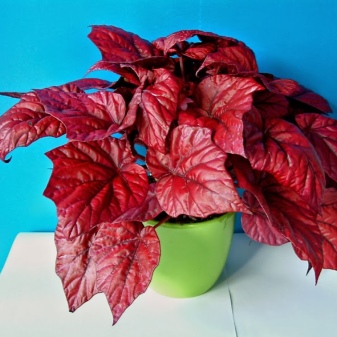
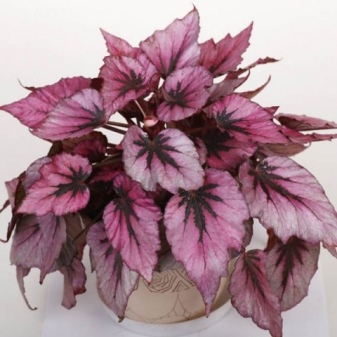
Helen lewis
Begonia Helen Lewis has velvety plum-black leaves interspersed with silver. All exotic lovers will like it.
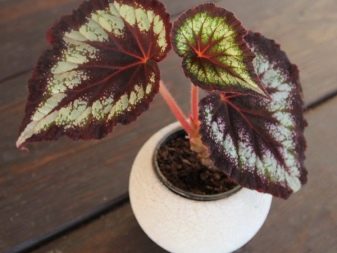
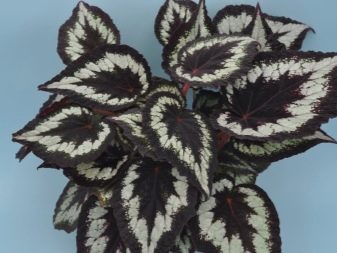
Fireworks
Fireworks is one of the most beautiful decorative begonias that are easy to care for. Its greenish-purple leaves with ornamented edging beckon to touch.

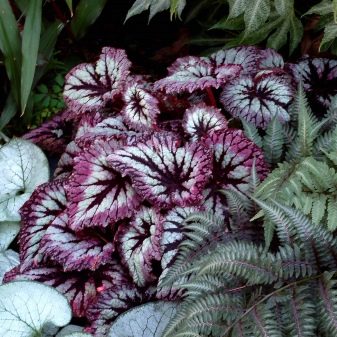
Beleaf Inca Flame
This varietal Beleaf Inca Flame begonia has rich, bright red leaves.
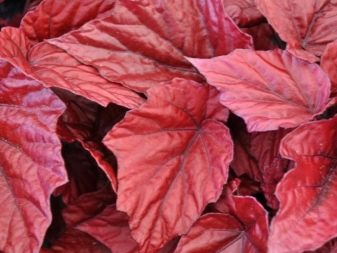
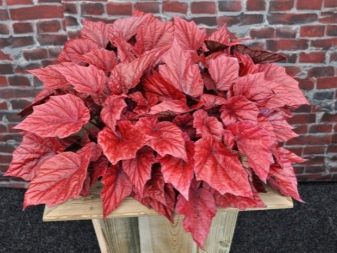
We also recommend paying attention to the Beleaf Inca Night, Morning Dew and Yukon Frost varieties.
Care
Taking care of royal begonia at home is not so difficult. The main thing is to know some of the nuances of watering and feeding, as well as the selection of a suitable place to place the plant. Begonias are fairly light-loving plants, and it is because of this that they have such a juicy and bright color of leaves. Therefore, it is not recommended to place them in too dark areas of the dwelling. With a lack of light at any time of the year, the leaves of the plant can turn pale and even begin to dry. In this case, it is recommended to avoid direct sunlight. Begonia leaves are quite delicate, with direct exposure to UV rays, burns may remain on them. In general, the ideal place to place a houseplant is partial shade with enough incident light.
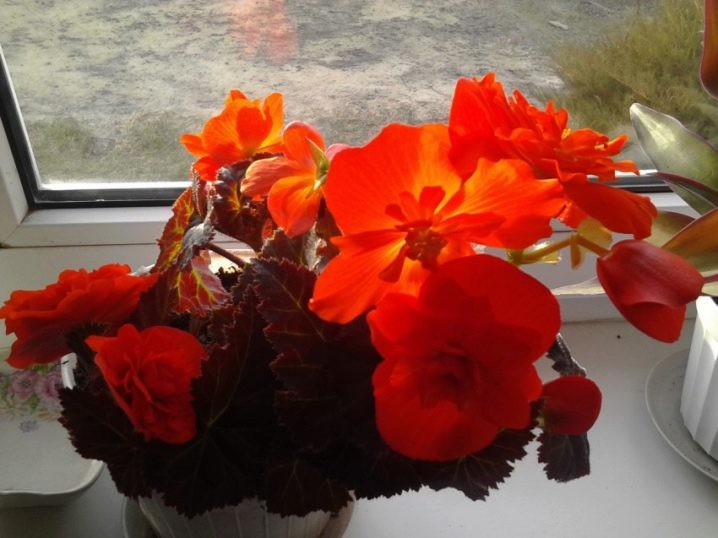
Royal begonia is tropical and therefore very thermophilic. The ideal temperature regime for its comfortable growth ranges from +15 to +25 degrees. Temperatures over 30 degrees and constant drafts are undesirable for her. In the summertime, pots with begonias can be taken out into the fresh air, but not in the open scorching sun. In winter, begonia can feel great on closed loggias, where the temperature fluctuates around + 16-17 degrees.
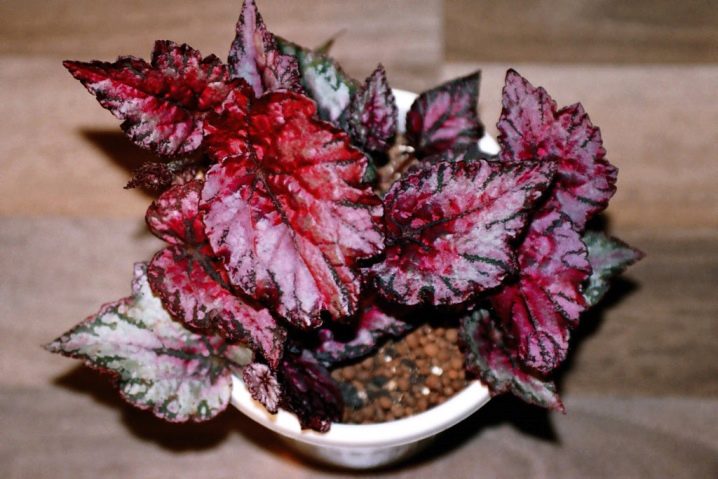
It is very important to properly water the plant and in no case overflow or flood it, otherwise excess moisture can lead to serious diseases and leaf discharge. In the summer, watering should be abundant, the soil should not be allowed to dry out. Typically, during the warmer months, it can vary from 2 to 4 times a week, depending on the age of the plant and the capacity in which it grows. Watering should be carried out with water at room temperature, preferably separated. Excessive moistening of begonias with a spray bottle is not recommended. This procedure can be carried out, but not very often.
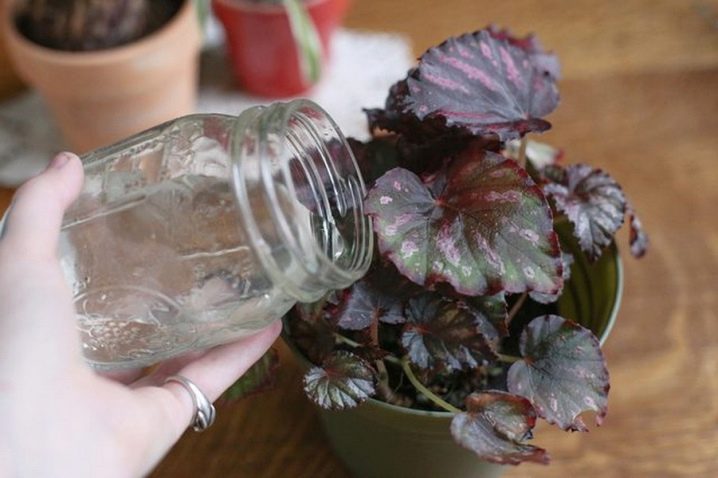
The velvet leaves of royal begonia very often collect dust from the air, thereby cleaning the room., therefore, it is recommended to wipe them with a damp sponge or not a hard cloth about once every 2-3 weeks as they become dirty. When performing any actions with a plant, including watering and cleaning, it is very important to remember that it is very fragile, so any manipulations should be done as carefully and carefully as possible.
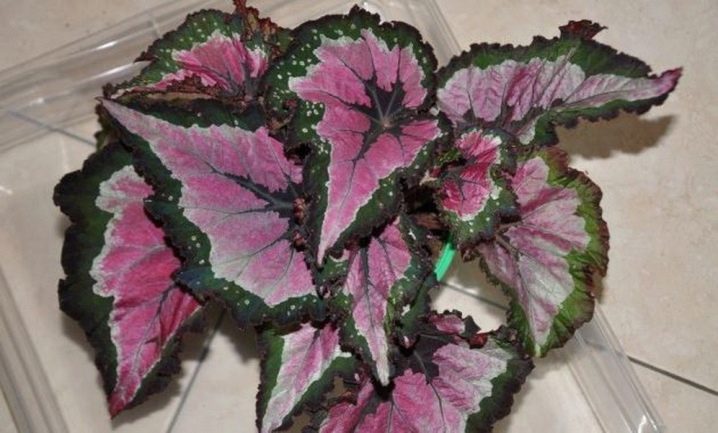
To improve the quality of life of the plant, it is recommended to feed it. You can do this once a month or less often, but not more often. It is best to buy ready-made dressings in specialized stores. As preventive measures against diseases and pests, you can use herbal infusions, which not only do not harm the life of the plant, but also serve as a kind of natural feeding.
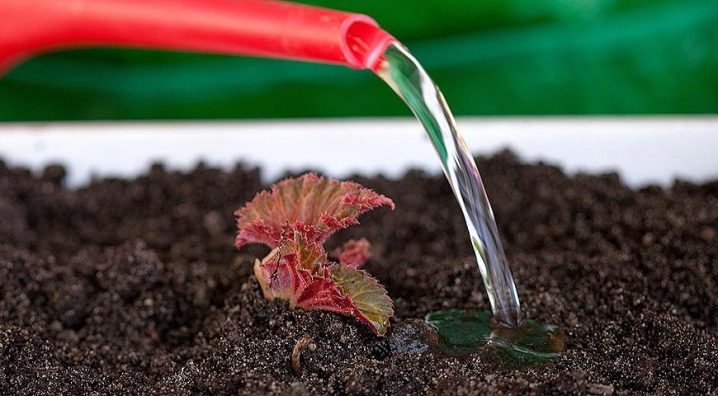
Transfer
Experts recommend replanting begonia once a year.Rejuvenation can be done every 3 years. It involves planting a new and fresh cuttings, which will later grow and replace the old plant. When transplanting a plant for the first time, you can use a container slightly larger than the previous one, so the plant will feel more comfortable, since it has a fairly developed root system. It is best to transplant the plant into a ready-made soil with an already selected substrate. When preparing it yourself, you should take leaf and sod land, as well as peat and sand. Humus can be added to the substrate, which allows the soil to "breathe" better. And so that the water in the pot does not stagnate, you should take care of the drainage, which fits to the very bottom of the container.
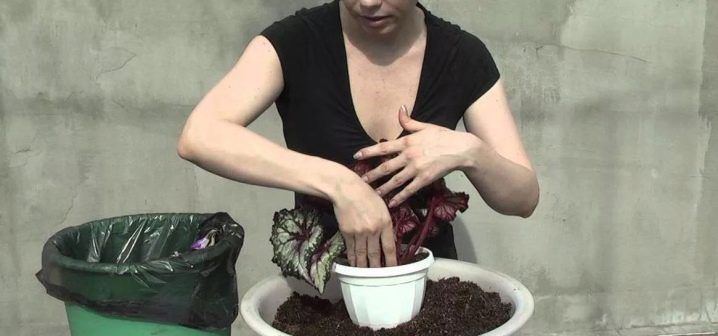
Begonia is best transplanted not so much into a deep container as into a wide one. This will help the roots grow better and the plant itself will look fresh and healthy. Several varietal begonias can also be planted in one large container. The result can be a very unusual floral arrangement.
Reproduction
There are several ways to propagate royal begonia. Let's consider each of them in more detail.
- With the help of seeds. This method is not the most popular, since it is quite troublesome, and there are not as many plants sprout from seeds as we would like. Nevertheless, this method is inferior in price to many others, because seeds are the cheapest to purchase. Begonia seeds are too small, very much like dust. In addition, their germination is so low that only breeders and professional gardeners are engaged in seed reproduction, who are not averse to spending a lot of time on this process.
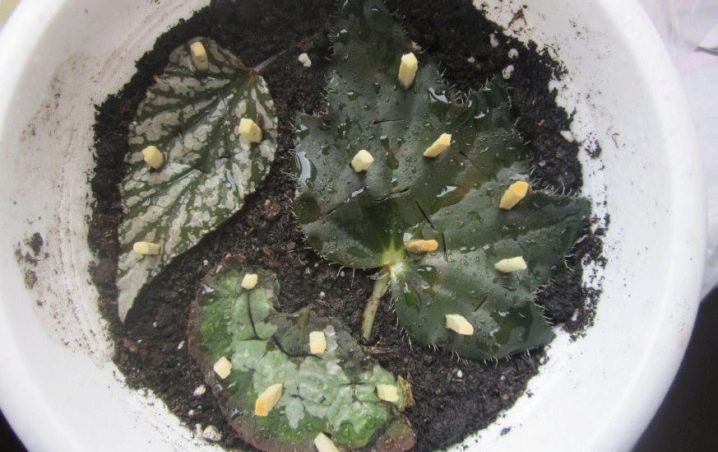
- Reproduction using rhizomes and tubers. As a rule, breeding varieties of royal begonias are rarely propagated in this way, although it is still used in some cases. It is rather difficult to deal with the division of the root system, since for better germination of the future flower it is very important to use that part of the root on which there is a growth bud, and there are not so many of them. To root future begonias, it is recommended to use special growth stimulants for this kind of indoor plants.
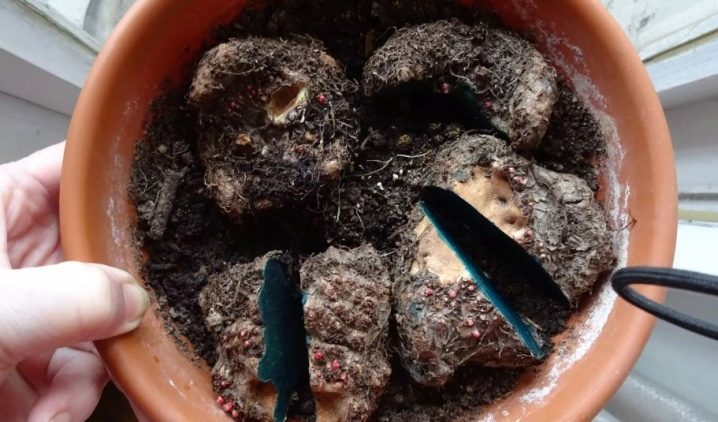
- The easiest and most common method of propagation is with a leaf or cuttings. Usually the cutting is left in a solution of a special rooting solution or simply in water for several days until the first roots appear, after which it is planted in a mixture of peat and soil, and then covered with glass or film. Every day, the substrate with the cuttings should be moistened, after which the grown sprout can already be planted in a separate soil. This should be done when the first small leaves appear on the young cuttings.
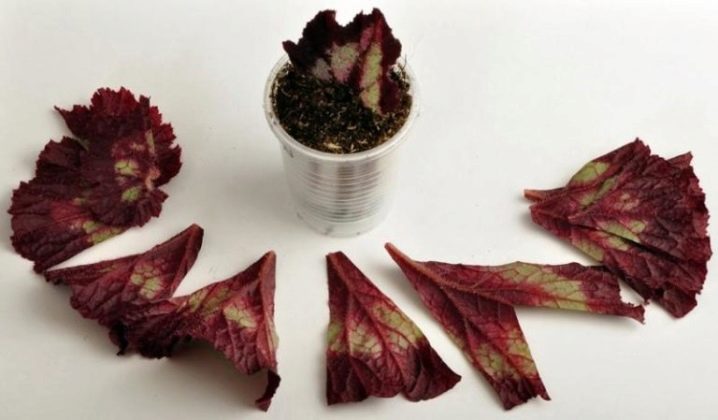
Pests and diseases
Begonia, like any other flower, can be attacked by various pests and insects, as well as get sick. The following pests are considered dangerous for this plant:
- spider mite;
- shield;
- thrips;
- whitefly.

Often insects switch to begonia from neighboring plants and very often this is due to the fact that it is already weakened. To combat insects, you can use not only specialized insecticides, but also folk remedies - for example, a solution of laundry soap or a decoction of chamomile and wood ash.
Of course, a good insecticide can be used for a one-time destruction of insects, but you should not get carried away with this method of "persecution" either. In this case, not only the plant suffers, but also the person who sprays the poison. When using any insecticide, it is very important not to forget about personal safety precautions. All manipulations should be carried out in a protective mask and gloves. As a preventive measure against diseases and insect attacks, it is very important to properly care for the plant, not to flood it or place it in open sunlight, it is also recommended to regularly ventilate the room with flowers.

As for diseases, begonia is most often susceptible to infection:
- gray mold and bacterial;
- powdery mildew.
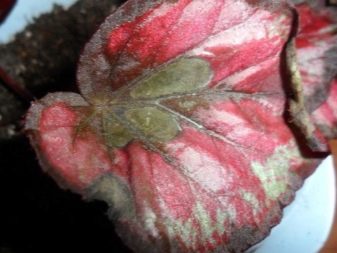

As a rule, a plant gets sick with a lack of vitamins, minerals and trace elements, which are responsible for the high-quality growth of the plant. The problem can often be solved with top dressing. But if we are talking about bacteria and fungi, then often the plant has to be thoroughly treated with special means, and sometimes even part of the decayed rhizome must be removed. In general, most begonia diseases are much easier to prevent than to treat a diseased plant in the future.
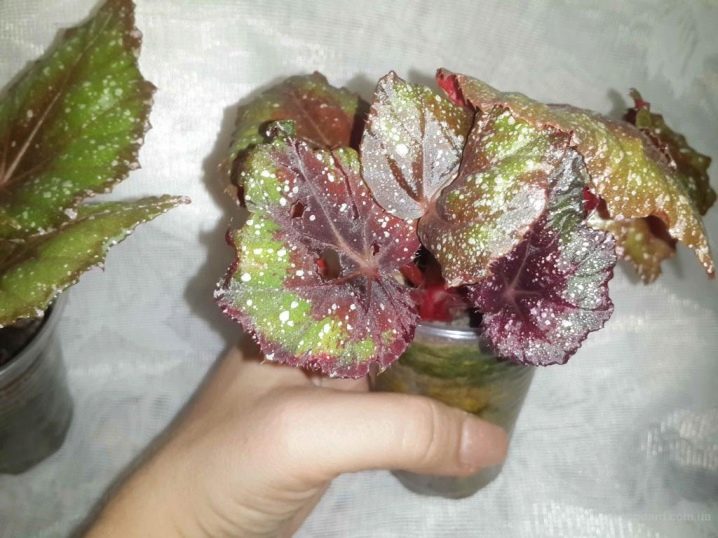
See below for more details.































The comment was sent successfully.